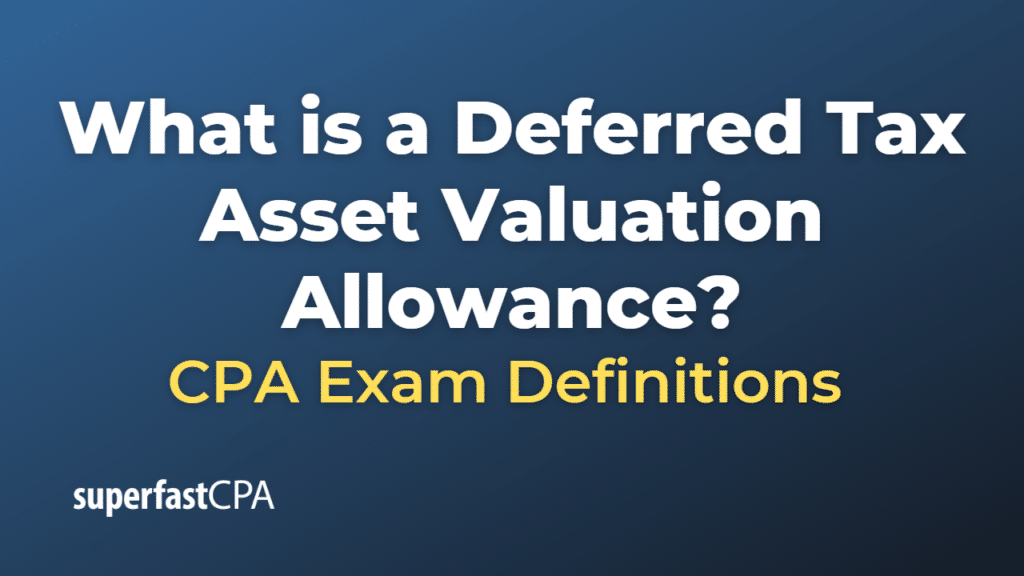Deferred Tax Asset Valuation Allowance
A deferred tax asset valuation allowance is a contra-asset account used to reduce the value of deferred tax assets if it is more likely than not (typically interpreted as a likelihood of more than 50%) that some portion or all of the deferred tax asset will not be realized.
Deferred tax assets represent potential reductions in future tax liability. They can arise due to temporary differences between the tax and financial reporting bases of assets and liabilities, or due to the availability of loss carryforwards. However, these future tax benefits can only be realized if the company has sufficient taxable income in the future.
If, based on available evidence, it is more likely than not that some portion or the entire deferred tax asset will not be realized, a valuation allowance is established. The amount of the valuation allowance would be enough to reduce the deferred tax asset to the amount that is expected to be realized.
For example, if a company has a deferred tax asset of $100,000 on its balance sheet, but it estimates that it will only be able to realize 60% of this asset, it would record a valuation allowance of $40,000. This would result in a net deferred tax asset of $60,000 ($100,000 – $40,000) on the balance sheet.
Changes in a valuation allowance can have a significant impact on a company’s income tax expense in the income statement. If a valuation allowance is established or increased, it will increase income tax expense. Conversely, if a valuation allowance is decreased, it will decrease income tax expense.
Determining the need for a valuation allowance involves significant judgement and depends on the company’s specific circumstances, including its future earnings potential, tax planning strategies, and the economic environment.
Example of a Deferred Tax Asset Valuation Allowance
Suppose Company ABC has a deferred tax asset of $200,000, which it expects to apply against future taxable income. However, the company has been facing economic challenges and forecasts indicate a decline in profitability over the next few years. Given these circumstances, the company estimates that it will only be able to realize 60% of the deferred tax asset.
In this case, Company ABC would establish a valuation allowance against the deferred tax asset. The valuation allowance would be calculated as follows:
Deferred tax asset * (1 – Expected realizable percentage)
= $200,000 * (1 – 0.60)
= $200,000 * 0.40
= $80,000
Company ABC would then record a valuation allowance of $80,000, reducing the net deferred tax asset reported on the balance sheet to $120,000 ($200,000 – $80,000).
It’s important to note that establishing the valuation allowance would also impact the company’s income statement. The $80,000 valuation allowance would be recognized as an income tax expense, reducing the company’s net income for the period.
In subsequent periods, if Company ABC’s prospects improve and it now expects to realize more of the deferred tax asset, it could reduce the valuation allowance. This would increase the net deferred tax asset on the balance sheet and reduce income tax expense on the income statement. Conversely, if the company’s prospects worsen, it might need to increase the valuation allowance, further reducing the net deferred tax asset and increasing income tax expense.
This example is a simplification, and in practice, the assessment of a valuation allowance involves significant judgement and may be influenced by a range of factors, including a company’s historical profitability, forecasted future income, tax planning strategies, and the economic environment.













